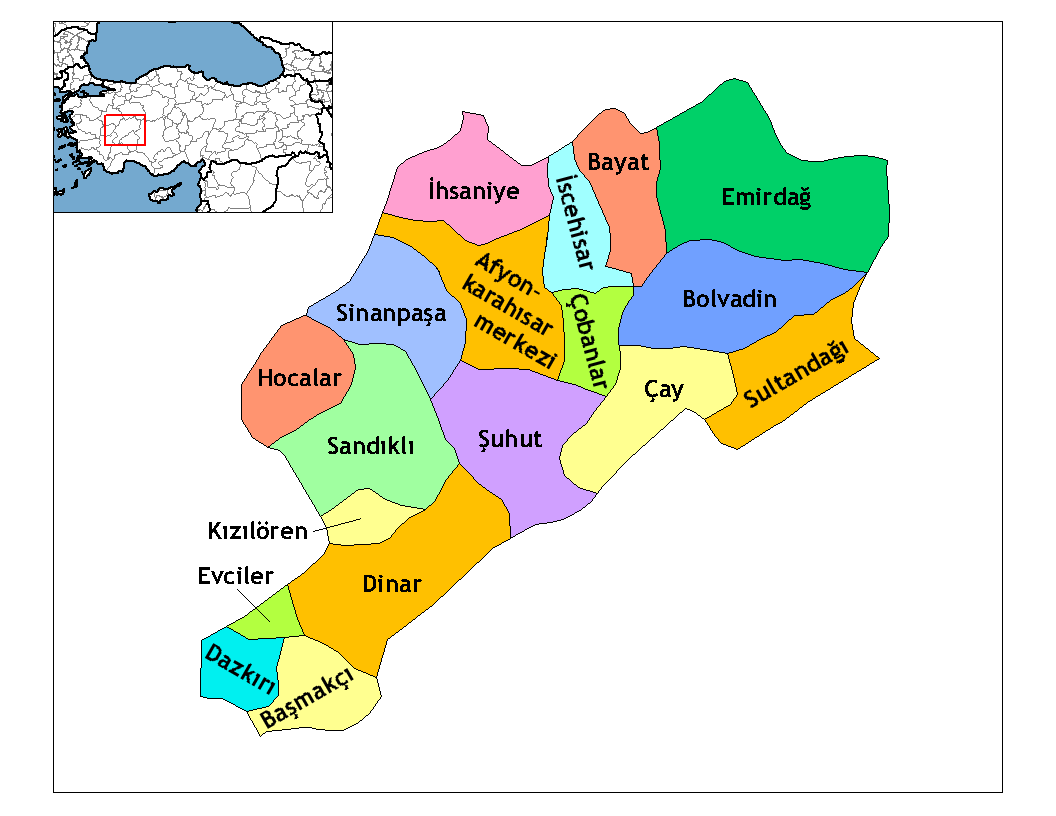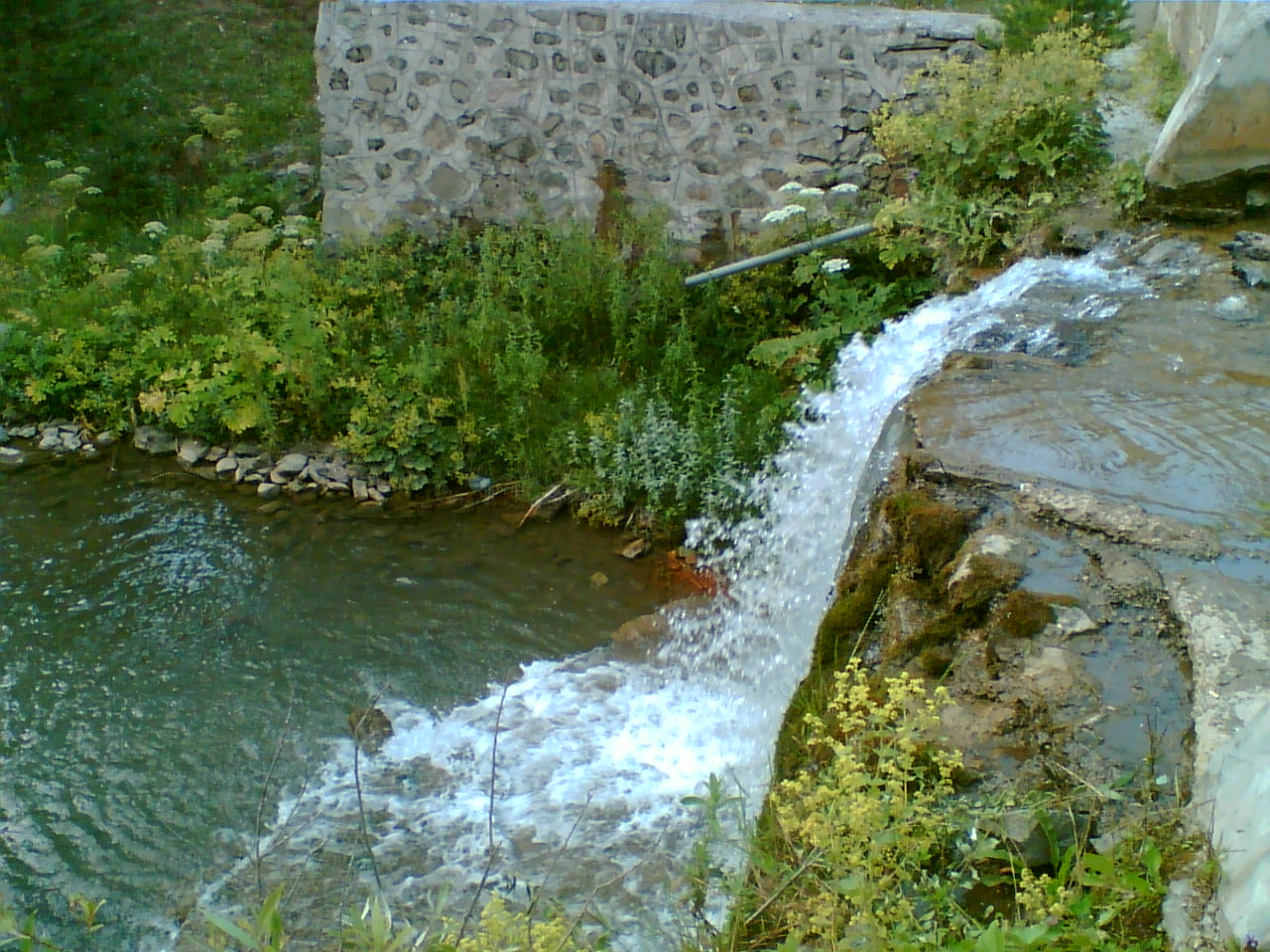|
á¯skilip
á¯skilip is a list of districts in Turkey, district of ûorum Province, Turkey, on the left bank of the River KáÝzáÝláÝrmak River, KáÝzáÝláÝrmak, located at 56 km from the city of ûorum, 100 miles (160 km) northeast of Ankara and 60 miles (100 km) southeast of Kastamonu. It is the seat of á¯skilip District.á¯lûÏe Belediyesi Turkey Civil Administration Departments Inventory. Retrieved 1 March 2023. Its population is 17,612 (2022). The mayor is Ali Sû¥lû¥k. Etymology Former names included ''Iskila'' (the name given to the area in Hittites, Hittite times), ''Asklepios'' / ''Aesculapius'' (in ancient Greek), ''Blocium'' / ''Bloacium'', ''á¯mad'', ''Iskelib'' / ''á¯skelib'' (the ancient name returning into use in the Seljuk Turkish era), and ''Direklibel''. Geography |
á¯skilip District
á¯skilip District is a district of the ûorum Province of Turkey. Its seat is the town of á¯skilip.á¯lûÏe Belediyesi Turkey Civil Administration Departments Inventory. Retrieved 1 March 2023. Its area is 1,170 km2, and its population is 29,643 (2022). Composition There is one in á¯skilip District: * á¯skilip There are 64 villages in á¯skilip District:[...More Info...] [...Related Items...] OR: [Wikipedia] [Google] [Baidu] |
BaémakûÏáÝ, á¯skilip
BaémakûÏáÝ is a village in the á¯skilip District of ûorum Province, Turkey. Its population is 134 (2022). According to some, the geographic center In geography, the centroid of the two-dimensional shape of a region of the Earth's surface (projected radially to sea level or onto a geoid surface) is known as its geographic centre or geographical centre or (less commonly) gravitational centre. In ... of all the land area of the earth is located a few miles to the north of the village. References Villages in á¯skilip District {{á¯skilip-geo-stub ... [...More Info...] [...Related Items...] OR: [Wikipedia] [Google] [Baidu] |
ûorum Province
ûorum () is a province in the Black Sea Region of Turkey, but lying inland and having more characteristics of Central Anatolia than the Black Sea coast. Its area is 12,428 km2, and its population is 524,130 (2022). Its provincial capital is the city of ûorum, the traffic code is 19. History Excavations reveal that ûorum area was inhabited during the Paleolithic, Neolithic period and the 4th stage of the Calcolithic Age. Remains of these periods have been found at Bû¥yû¥k Gû¥llû¥ce, Eskiyapar and Kuésaray. In later times ûorum and its environs were dominated by Hittites and in the district of Boáazkale is one of the most important Hittite sites in Anatolia, the UNESCO World Heritage listed Hattusa, the capital of the Hittite Empire from 1700 BC to 1200 BC. Other important Hittite sites include the open-air temples at YazáÝláÝkaya and AlacahûÑyû¥k; royal tombs; and the excavations of BoáazkûÑy including tablets proving tradings links between the Hittites and t ... [...More Info...] [...Related Items...] OR: [Wikipedia] [Google] [Baidu] |
List Of Districts In Turkey
The Provinces of Turkey, 81 provinces of Turkey are divided into 973 districts (''ilûÏeler''; sing. ''ilûÏe''). In the Ottoman Empire and in the early Turkish Republic, the corresponding unit was the ''qadaa, kaza''. Most provinces bear the same name as their respective provincial capital (political), capital districts. However, many urban provinces, designated as greater municipalities, have a center consisting of multiple districts, such as the provincial capital of Ankara Province, Ankara province, Ankara, The City of Ankara, comprising nine separate districts. Additionally three provinces, Kocaeli, Sakarya, and Hatay have their capital district named differently from their province, as á¯zmit, AdapazaráÝ, and Antakya respectively. A district may cover both rural and urban areas. In many provinces, one district of a province is designated the central district (''merkez ilûÏe'') from which the district is administered. The central district is administered by an appointed pr ... [...More Info...] [...Related Items...] OR: [Wikipedia] [Google] [Baidu] |
ûorum
ûorum () is a northern Anatolian city in Turkey. ûorum is located inland in the central Black Sea Region of Turkey and is approximately from Ankara and from Istanbul. It is the seat of ûorum Province and of ûorum District.á¯lûÏe Belediyesi Turkey Civil Administration Departments Inventory. Retrieved 1 March 2023. Its population is 269,595 (2022). The city has an of above sea level. ûorum is primarily known for its n and Hittite archaeological sites, its [...More Info...] [...Related Items...] OR: [Wikipedia] [Google] [Baidu] |
Black Sea
The Black Sea is a marginal sea, marginal Mediterranean sea (oceanography), mediterranean sea lying between Europe and Asia, east of the Balkans, south of the East European Plain, west of the Caucasus, and north of Anatolia. It is bounded by Bulgaria, Georgia (country), Georgia, Romania, Russia, Turkey, and Ukraine. The Black Sea is Inflow (hydrology), supplied by major rivers, principally the Danube, Dnieper and Dniester. Consequently, while six countries have a coastline on the sea, its drainage basin includes parts of 24 countries in Europe. The Black Sea, not including the Sea of Azov, covers , has a maximum depth of , and a volume of . Most of its coasts ascend rapidly. These rises are the Pontic Mountains to the south, bar the southwest-facing peninsulas, the Caucasus Mountains to the east, and the Crimean Mountains to the mid-north. In the west, the coast is generally small floodplains below foothills such as the Strandzha; Cape Emine, a dwindling of the east end ... [...More Info...] [...Related Items...] OR: [Wikipedia] [Google] [Baidu] |
Anatolia
Anatolia (), also known as Asia Minor, is a peninsula in West Asia that makes up the majority of the land area of Turkey. It is the westernmost protrusion of Asia and is geographically bounded by the Mediterranean Sea to the south, the Aegean Sea to the west, the Turkish Straits to the northwest, and the Black Sea to the north. The eastern and southeastern limits have been expanded either to the entirety of Asiatic Turkey or to an imprecise line from the Black Sea to the Gulf of Alexandretta. Topographically, the Sea of Marmara connects the Black Sea with the Aegean Sea through the Bosporus and the Dardanelles, and separates Anatolia from Thrace in Southeast Europe. During the Neolithic, Anatolia was an early centre for the development of farming after it originated in the adjacent Fertile Crescent. Beginning around 9,000 years ago, there was a major migration of Anatolian Neolithic Farmers into Neolithic Europe, Europe, with their descendants coming to dominate the continent a ... [...More Info...] [...Related Items...] OR: [Wikipedia] [Google] [Baidu] |
Hattians
The Hattians () were an ancient Bronze Age people that inhabited the land of ''Hatti'', in central Anatolia (modern Turkey). They spoke a distinctive Hattian language, which was neither Semitic languages, Semitic nor Indo-European languages, Indo-European. Hattians are attested by archeological records from the Early Bronze Age and by historical references in later Hittites, Hittite and other sources. Their main centre was the city of Hattush. Faced with Hittite expansion (since 2000 BC), Hattians were gradually absorbed (by 1700 BC) into the new political and social order, imposed by the Hittites, who were one of the Indo-European-speaking Anatolian peoples. The Hittites kept the choronym, country name ("land of Hatti") unchanged, which also became the main designation for the Hittite state. Terminology Complex questions related to etymology of endonymic, native names for Hattians, their land, language and capital city (Hatti, Hattili, Hattush) are debated among scholars. L ... [...More Info...] [...Related Items...] OR: [Wikipedia] [Google] [Baidu] |
Tosya
Tosya (), previously called Theodosia ( Greek: ööçö¢öÇö¢üö₤öÝ) or Doceia ( Greek: öö¢ö¤öçö₤öÝ) under the Byzantine Empire, is a town in Kastamonu Province in the Black Sea region of Turkey Turkey, officially the Republic of Tû¥rkiye, is a country mainly located in Anatolia in West Asia, with a relatively small part called East Thrace in Southeast Europe. It borders the Black Sea to the north; Georgia (country), Georgia, Armen .... It is the seat of Tosya District.á¯lûÏe Belediyesi Turkey Civil Administration Departments Inventory. Retrieved 1 March 2023. Its population is 28,963 (2021). It is the home town of the famous Boyner family and the birthplace of Markos Vafeiadis (1906ã1992), a ... [...More Info...] [...Related Items...] OR: [Wikipedia] [Google] [Baidu] |
Kastamonu Province
Kastamonu Province () is a Provinces of Turkey, province of Turkey, in the Black Sea Region, Turkey, Black Sea region in the north of the country. It is surrounded by Sinop Province, Sinop to the east, BartáÝn Province, BartáÝn, Karabû¥k Province, Karabû¥k to the west, ûankáÝráÝ Province, ûankáÝráÝ to the south, ûorum province, ûorum to the southeast and the Black Sea to the north. Its area is 13,064 km2, and its population is 378,115 (2022). The population density is 29 inhabitants per km2. The provincial capital Kastamonu has a population of 128,707 (2022). Districts Kastamonu province is divided into 20 Districts of Turkey, districts (capital district in bold): History It is not definitively known when Kastamonu was first founded. However, some sources dating back to the Early Middle Ages refer to the province. There are also some archeological findings that date to about 100,000 years that suggest the region was inhabited at that time. There are many ideas abou ... [...More Info...] [...Related Items...] OR: [Wikipedia] [Google] [Baidu] |
Nationalist Movement Party
The Nationalist Movement Party, or alternatively translated as Nationalist Action Party (, MHP), is a Turkish Far-right politics, far-right, ultranationalism, ultranationalist Political parties in Turkey, political party. The group is often described as Neo-fascism, neo-fascist, and has been linked to violent paramilitaries and Turkish mafia, organized crime groups. Its leader is Devlet BahûÏeli. The party was formed in 1969 by former Turkish Army colonel Alparslan Tû¥rkeé, who had become leader of the Republican Villagers Nation Party (CKMP) in 1965. The party mainly followed a Pan-Turkism, Pan-Turkist and Turkish nationalist political agenda throughout the latter half of the 20th century. Devlet BahûÏeli took over after Tû¥rkeé's death in 1997. The party's youth wing is the Grey Wolves (organization), Grey Wolves (''Bozkurtlar'') organization, which is also known as the "Nationalist Hearths" (''ûlkû¥ OcaklaráÝ'') which played one of the biggest roles during the Political v ... [...More Info...] [...Related Items...] OR: [Wikipedia] [Google] [Baidu] |
Paphlagonian
Paphlagonia (; , modern translit. ''PaflagonûÙa''; ) was an ancient region on the Black Sea coast of north-central Anatolia, situated between Bithynia to the west and Pontus to the east, and separated from Phrygia (later, Galatia) by a prolongation to the east of the Bithynian Olympus. According to Strabo, the region was bounded by the river Parthenius to the west and the Halys River to the east. ''Paphlagonia'' was said to be named after Paphlagon, a son of the mythical Phineus. Location The greater part of Paphlagonia is a rugged mountainous country, but it contains fertile valleys and produces a great abundance of hazelnuts and fruit ã particularly plums, cherries and pears. The mountains are clothed with dense forests, notable for the quantity of boxwood that they furnish. Hence, its coasts were occupied by Greeks from an early period. Among these, the flourishing city of Sinope, founded by colonists from Miletus in ca. 630 BC, stood pre-eminent. Amastris, a few miles ea ... [...More Info...] [...Related Items...] OR: [Wikipedia] [Google] [Baidu] |






